Fish species
At Wildside Sportfishing we target a wide variety of species depending on
the season, conditions and client requests
Fish Directory
Many people ask what types of fish you can catch on the Mid North Coast of NSW. Below are the most popular and sought after, that we often hunt on our fishing charters.
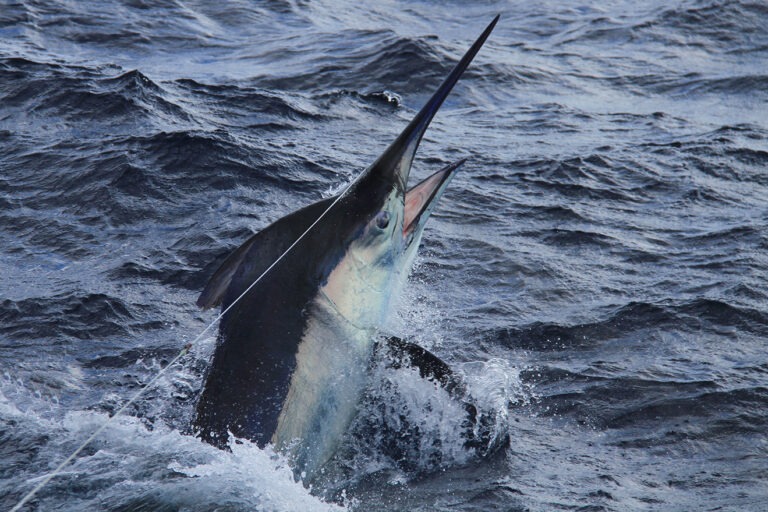
Black Marlin
Black Marlin juveniles range between 20kg and 60kg make a run along our coastline in great numbers in December each year, peaking in the middle of summer. On good days they can be found in extremely shallow clear water close to the rocks and bays, giving anglers a memorable fight and experience.
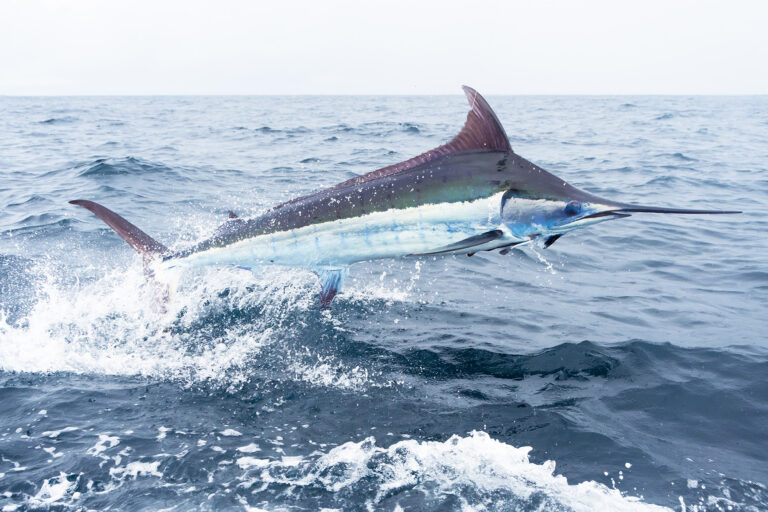
Blue Marlin
Blue Marlin are true ocean wanderers, and probably the craziest fish in the ocean once hooked. Their insane runs along the surface jumping and greyhounding create a mass of thrashing foam and white water that no angler will ever forget. To target takes commitment and long hours of wait time, but for those keen the rewards are BIG.
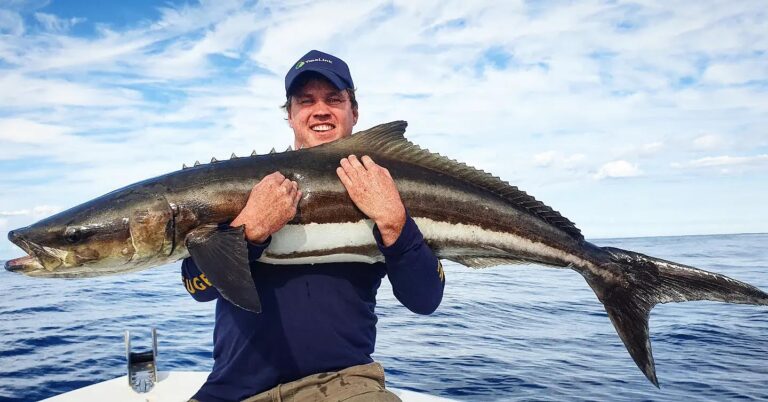
Cobia
Cobia or ‘black kingfish’ are one strange critter! They aren’t fussy eaters and will munch most things, including crabs, and can be found from way up the river and estuary to offshore reefs and wrecks during warmer months. Quite often found swimming alongside large rays and sharks, they grow to massive sizes in their own right
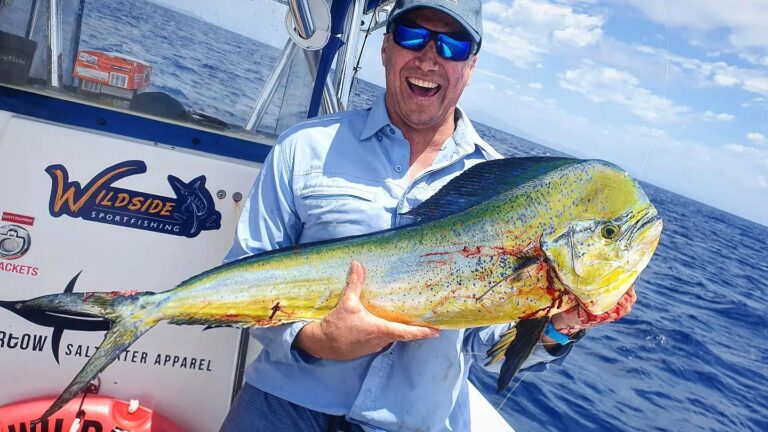
Dolphin Fish
Dolphin Fish are one of the best! They grow super fast, jump all over the ocean, fight hard, taste great and look absolutely spectacular in iridescent gold green and blues tones. Nothing quite like them.
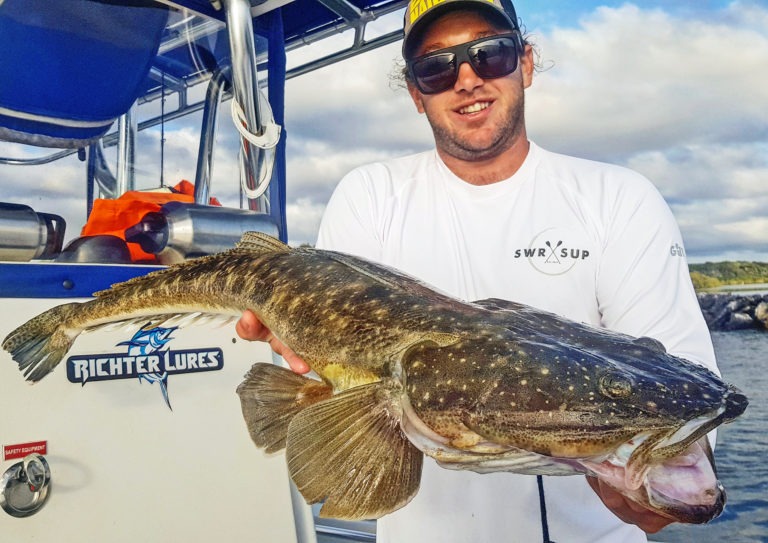
Flathead
Flathead are of one species or another are caught in virtually every habitat we fish. ‘Duskies’ as they are known live in the Macleay River and grow over a meter in length. Sand flatties and blue spotted are out on the flat bottom and rubble. Marbled and armour headed around the reef edges and tigers in the deep. They’re all yummy!
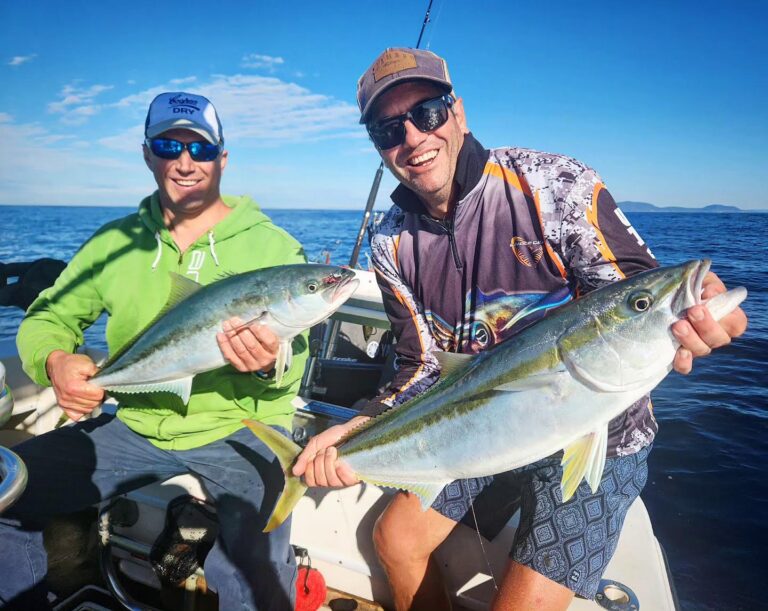
Kingfish
Kingfish are one of hardest fighting fish in the ocean, with blistering runs and dirty tactics looking for any structure to cut the line. Although caught year round in South West Rocks the bigger models are best targeted in Winter, Spring and early summer.
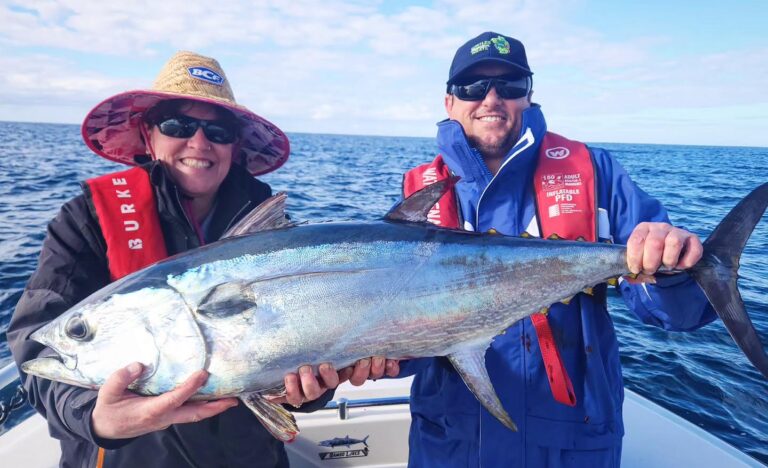
Longtail Tuna
Longtails are a true inshore tuna species. They’re almost year round but are most common through autumn and winter in our neighbourhood. Exceptionally hard fighting, the meat is best done as sashimi or pan seared and left raw in the centre.

Mangrove Jack
During the warmer months these red devils are found along the river break walls. We generally target them drifting live baits employing a heavy handed “first round knockout” approach – jacks are dirty fighters and will have you cut off under a rock in no time.
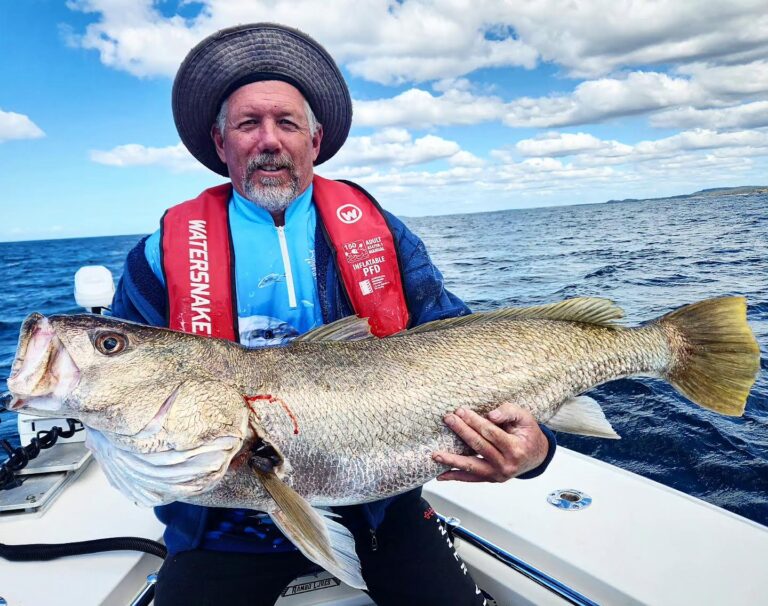
Mulloway
Mullaway are also known as Jewfish, and they’re on every anglers hit list. Typically found prowling the estuaries, coastal reefs and wrecks in tight schools. Unfortunately they suffer from over fishing, which hopefully is in the process of being rectified.
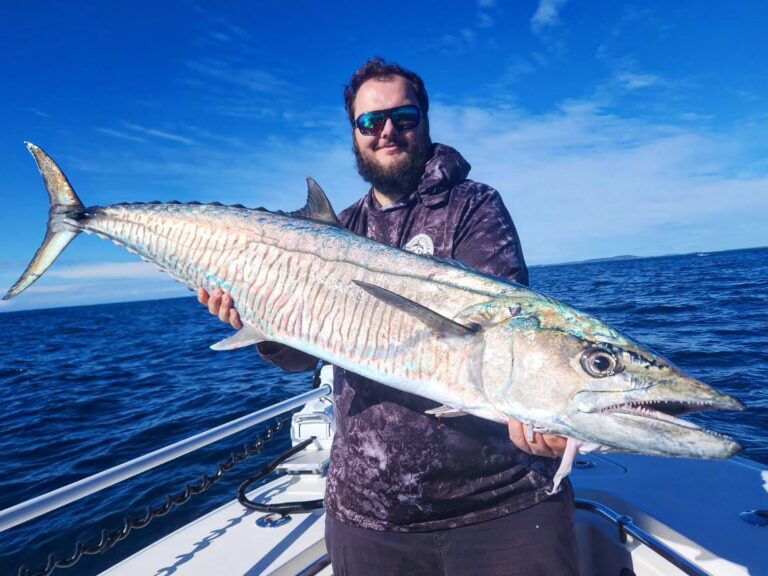
Narrow Barred Spanish Mackerel
One of Wildside Sportfishings personal favourites, Spanyids are a seasonal visitor to South West Rocks turning up at the start of summer and remaining until the start of winter. They grow massive, taste delicious and fight cleanly with long powerful runs.
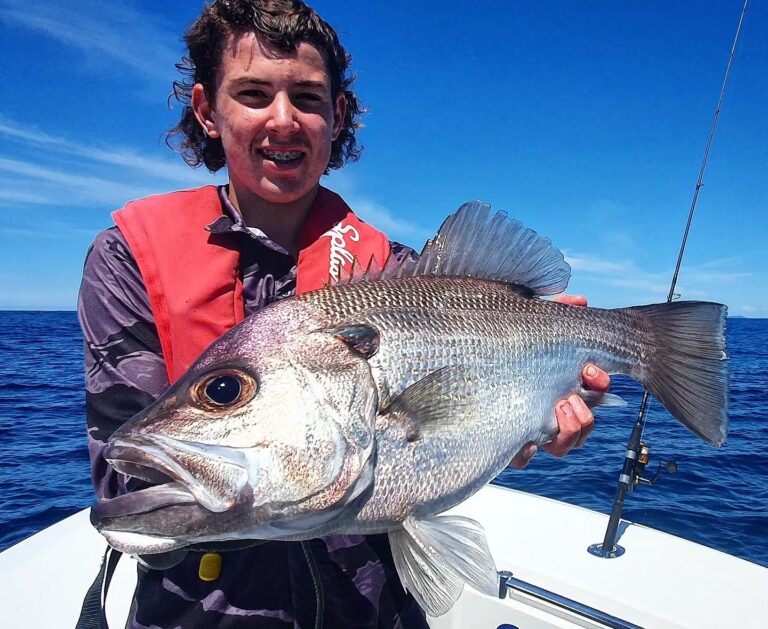
Pearl Perch
Pearl Perch are normally found over the deeper reefs but will come in quite close during winter. Very popular amongst fishos for their eating qualities, we frequently catch them on lures and bait during the second half of the year.
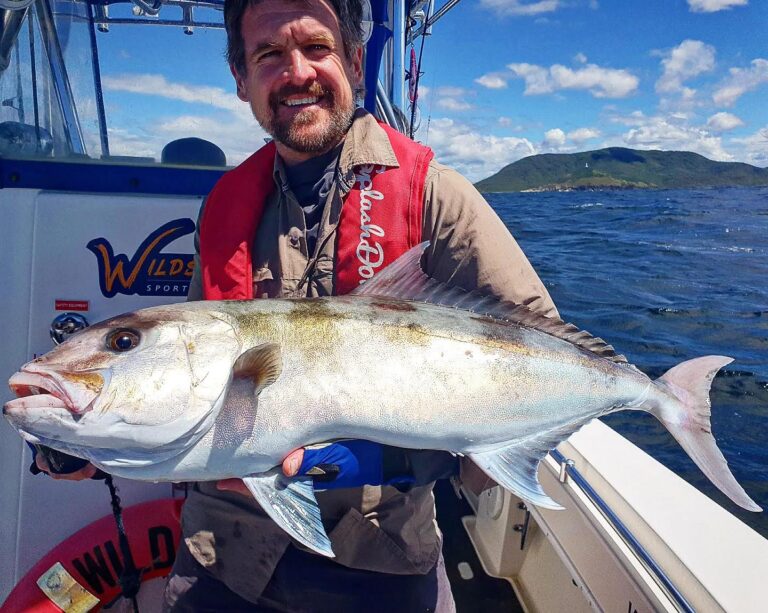
Sampson Fish
Sambos are generally caught up north of South West Rocks in the cooler months starting in June. Some years are better than others and these brutes can often turn up out of nowhere. They’re closely related to kingfish, but with a higher body and mottled markings alongside.
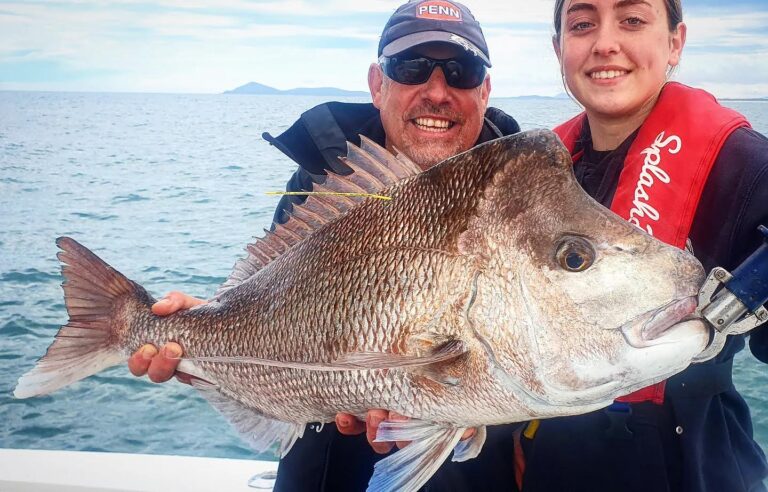
Snapper
Snapper are one of Australia’s all time favourites, the pink snapper is caught here from shallow to deep water on lures and bait. They fight hard and the smaller models are
top eating.
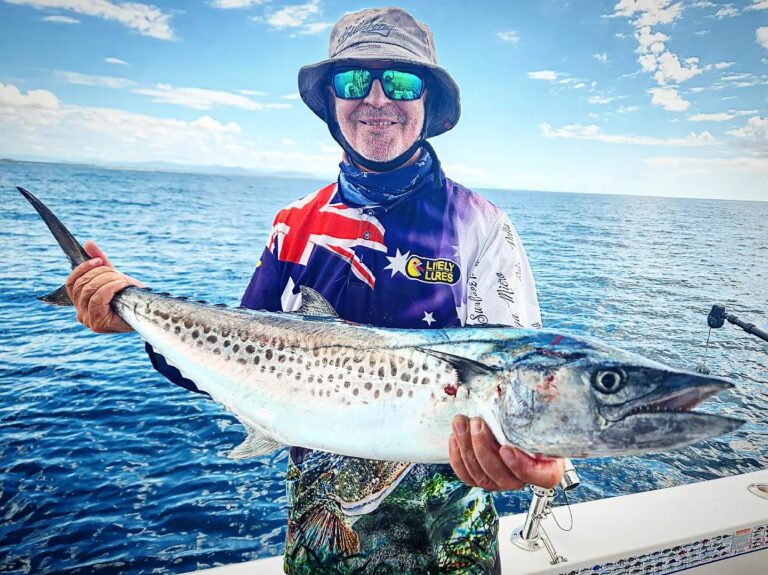
Spotted Mackerel
The Spotted Mackerel are known to local anglers as snook, they’re another seasonal visitor similar to Spanish mackerel. Often turning up in large numbers they’re extremely popular due to the great fight and good eating qualities.
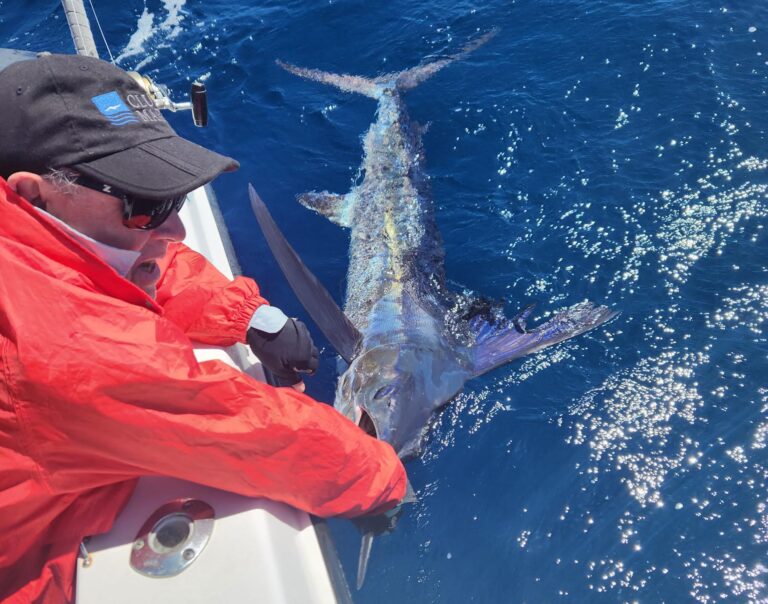
Striped Marlin
Striped Marlin start to frequent our offshore grounds from around 80 meters to 300 meters deep during late winter and throughout spring time. They hunt the masses of large slimy mackerel that school up over this period, and can also be found chasing sauries on the surface.

Teraglin
Teraglin fish look very similar to mulloway with a few obvious differences. The mouth inside is yellow orange, the tail is concave instead of convex and the body is softer with lighter scales. They taste delicious battered in my opinion!
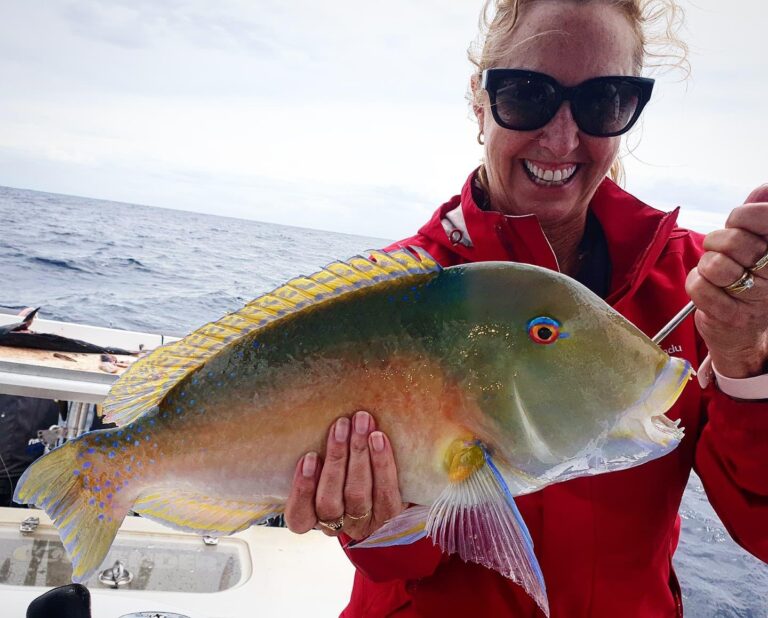
Venus Tuskfish
The Venus Tuskfish is one of the most attractive species we target, frequenting the heavy coral incrusted reefs to our north. They will take lures and bait, and taste as good as they look!
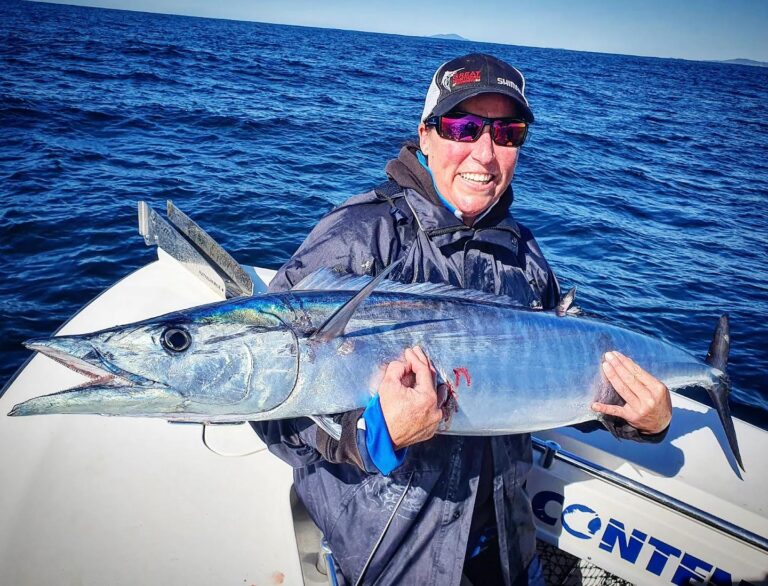
Wahoo
Wahoo as the name suggests are truly crazy. The first run is like hooking your line to a jet ski, and the direction changes during the fight cause most anglers to loose contact, and often loose the fish. Similar looking to a mackerel but with a sharper snout, sharper teeth and thick vertical blue zebra stripes.

Yellowfin Tuna
Yellowfin Tuna have bounced back somewhat along the east coast in recent years. The large models are primarily targeted in South West Rocks during cooler months, whilst the small “jelly been” sized fish (3 to 15kg) are prolific inshore during summer and autumn when the water is clean.
